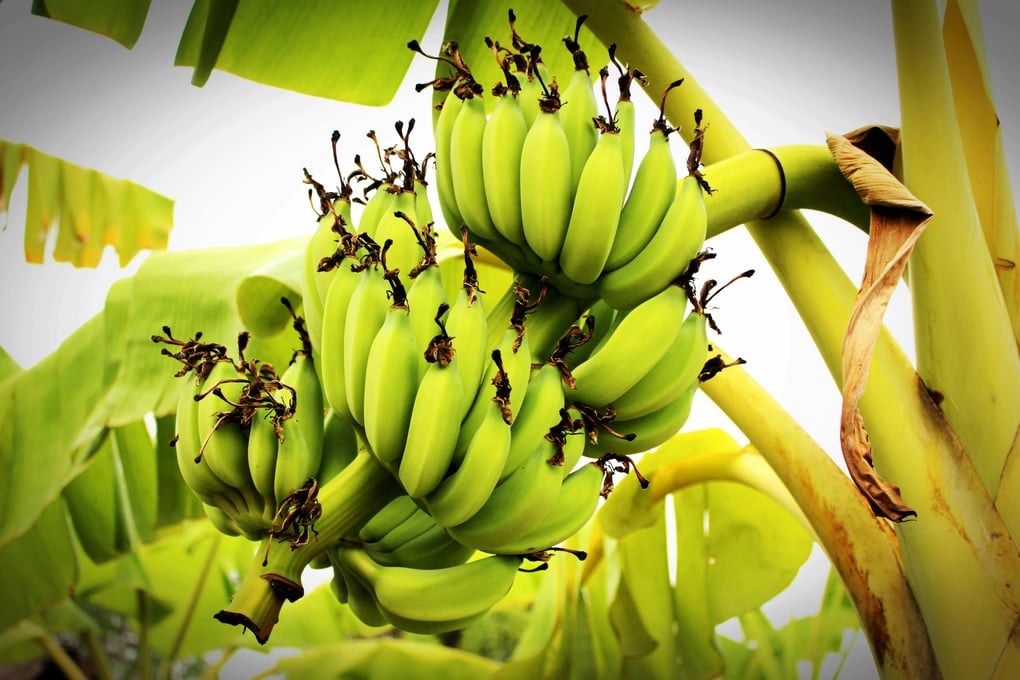Growing up in Thailand, I’ve had the chance to eat many different types of bananas, see them made into a variety meals, and see the whole plants used in countless ways. Coming to the U.S. to study, I’ve realized that there’s only one type of banana (not including plantains) eaten here, and I also realized that not many people use the banana plant itself. So if you’re from the U.S., here are some of the parts of banana plants and how they’re used in my culture that you may have never known.
1. The Root
Believe it or not, the root of a banana can actually help alleviate toothaches. All you have to do is take the root, clean it, boil it with a lot of salt for 15 minutes, and then gargle it in the morning. Certain roots of other varieties of bananas, if boiled, can also alleviate ulcers in the mouth.
2. The Stem

The banana plant plays a big role in a Floating Festival (Loy Krathong) in Thailand. Since banana stems float, people cut the stems to make floats for the festival. Sometimes they’re even used to make rafts to float on the river.
Also, the liquid that comes out of the stem can be used as a hair treatment. Rubbing the liquid on your hair can help reduce hair loss, as well as help increase the rate of hair growth. Last but not least, people in Thailand often mix banana stems with sugar, salt, and other ingredients to make pig’s food because it’s believed to increase a pig’s immunity (and it’s cheap).
3. The Leaves

The banana leaf can be used for cooking, packing, and decorating because it’s a good heat conductor, flexible, and waterproof. Food that’s cooked in a banana leaf has a unique flavor to it because of the smell that comes from the leaf– personally, I think it gives the food a refreshing taste. It’s widely used in steaming, but it can also be used to deep-fry.
Like I said, the leaf is also used for packing foods, especially when traveling. Banana leaves are more sustainable in comparison to plastic bags, and an added bonus is that the food looks more appetizing in banana leaves. Unfortunately, this use of the leaf is seen less now because of the innovation of plastic and styrofoam.
4. The Fruits
You probably know different dishes and recipes that bananas are a part of. But did you know that different ripeness levels of banana do different things to your body? In Thailand, we know that certain bananas can have different health effects at each of the four stages below.
Raw bananas can help with gastritis because they contain Tannin that helps coat the intestine. To reap this benefit, cut the banana into slices and bake until dry, then grind it into a powder and mix it into a drink.
Underripe bananas can help with diarrhea. You may have heard that bananas have a lot of potassium, but the banana loses that potassium as it gets more ripe. The best time to eat a banana to get the potassium you need is when the banana is underripe.
Perfectly-ripe bananas can help with constipation. Bananas contain fiber that allows your body to digest easier by aiding the intestine.
Overripe banana may help prevent cancer by creating immunity and building new white blood cells.
5. The Blossom

The blossom of the banana tree is often served boil with Pad Thai or Thai Rice Noodles, but sometimes it’s also served by itself. It’s used to make other dishes such as Tom Yum (Spicy Lemongrass Soup), Hor Mok (Thai Curry Fish Custard), and Fried Banana Blossom. It has many benefits including reducing the sugar level in the blood, which reduces the risk of diabetes. Dried blossoms can also help with anemia.
6. The Sap

Did you know that the sap of a banana plant can be used to stop bleeding? All you have to do is drop the sap directly onto the wound, and it will gradually slow down the bleeding. So if you’re thinking about going hiking, pick the route with banana plants.
These are just small aspects of the many uses of banana plants I’ve encountered throughout my life. Banana plants in some other countries may be used in even more ways. So when traveling to new countries, think about asking the locals what they banana plants for– you may just be surprised.
Note: Because this article was written based off of information regarding banana plant use in Thailand, many facts are not hyperlinked because the sources are in Thai and not English.




